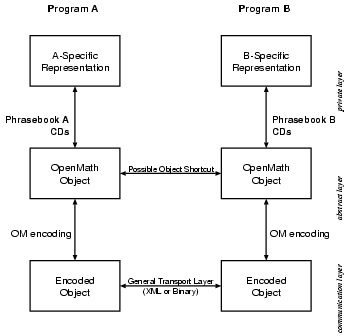
S. Buswell, O. Caprotti, D. P. Carlisle, M. C. Dewar, M. Gaëtano, M. Kohlhase, J. H. Davenport (revision 1), P. D.F. Ion (revision 1) and T. Wiesing (revision 2)
Source Repository: https://github.com/OpenMath/OMSTD
This Version: https://openmath.github.io/standard/om20-editors-draft
Normative version: https://openmath.github.io/standard/om20-2017-07-22/

